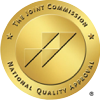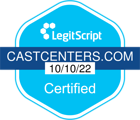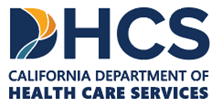The Myth Of Going Away To Get Sober
- Home
- Blog
- Uncategorized
- The Myth Of Going Away To Get Sober

By Patrick O’Neil, Group Facilitator, CAST Centers
There has been considerable discussion regarding what modality of addiction treatment is the most successful. However, research has not shown inpatient rehabilitation as having any advantages over outpatient treatment. In a recent report, by the Partnership at Drugfree.org and the New York State Office of Alcoholism and Substance Abuse Services, evidence shows that there are about 24 million Americans who are addicted to drugs and alcohol, but only 4 million of them have been to treatment. This incredibly low number of addicts seeking help is due to many mitigating factors. The most common being that the majority of addicts are not ready to stop using and those that are may be reluctant to seek treatment out of fear that they have to enter a residential facility and the ensuing financial concerns (loss of income and the cost of treatment) when they do.
However those fears and concerns are being addressed and within the professional medical community the consensus, endorsed by the AMA and the National Institute on Drug Abuse, is that addiction is a disease—and diseases require treatment. As New York Times reporter Benedict Carey wrote, “Congress passed the mental health parity law, which for the first time includes addiction treatment under a federal law requiring that insurers cover mental and physical ailments at equal levels.” This new level of insurance coverage has allowed for a greater availability of treatment modalities. Such as the aforementioned traditional residential rehab where addicts go away to live in the treatment facility for up to 28 days with 24 hour monitoring. To the newer implementation of Partial Hospitalization Program (PHP) which involves 6 hours of treatment a day, 5 days a week, or Intensive Out Patient (IOP) with 3 hours of treatment a day, 3 days a week. With both the IOP/PHP alternatives the individual attends a day program without having to completely alter their lives or where they live.
Deciding which program works best for the individual is usually defined through in-depth interviews with trained recovery professional that evaluate the level of care the addict needs. This is done on a case-by-case basis. According to Dr. Mark Willenbring, a former director of treatment and recovery research at the National Institute for Alcohol Abuse and Alcoholism, “People with a chronic form of addiction need multimodal treatment that is individualized and offered continuously or intermittently for as long as they need it.” With IOP/PHP as alternatives to the traditional residential treatment the recovery landscape has been altered in the way addiction is now being treated.
But what is the criterion that decides the level of care that the patient needs? In their study “Principles of Drug Addiction Treatment,” the National Institute on Drug Abuse concludes, “To be effective, treatment must address the individual’s drug abuse and any associated medical, psychological, social, vocational, and legal problems.” For a great number of addicts seeking recovery it is imperative that they do not have to fully disengage from their lives. Not everyone is capable of dropping out of circulation to go away to a residential rehab. In fact for the majority of most addicts the idea that they will have to put their lives on hold is a major stumbling block that prevents them from seeking help.
Yet given the opportunity to engage in day treatment IOP/PHPs have emerged as crucial addiction treatment components for people who need a more intensive level than traditional outpatient treatment or one hour a week individual therapy. In his paper, “Substance Abuse Intensive Outpatient Programs: Assessing the Evidence,” Dr. Dennis McCarty, a professor at the Oregon Health and Science University wrote, “IOPs are an important part of the continuum of care for alcohol and drug use disorders. They are as effective as inpatient treatment for most individuals seeking care.” The difference being that IOPs are a more accessible format for treatment than residential rehabs due in part to a longer duration of treatment; 3 days a week keeps the patient connected with treatment longer as opposed to the two to four week residency—which is the normal stay for most residential facilities—and then the client is discharged with no established support group in their area or the opportunity to practice their newly learned sobriety skills and behaviors outside of their former residential treatment setting.
In his study, “A Randomized Trial Comparing Day and Residential Drug Abuse Treatment: 18-month Outcomes,” published in the Journal of Consulting and Clinical Psychology, UCSF professor Joe Guydish stated, “Overall, the level of improvement among day treatment clients was not significantly different from that of residential clients.” In other words there really was no evidence that residential treatment worked any better than PHP or IOPs. In fact the latest studies reported in American Psychological Association’s Psychiatric News revealed that, “50 to 70 percent of [IOP] participants reported abstinence” when follow-up interviews were conducted, while recent statistics published by PubMed Central show that more than 85% of addicts relapse and return to drug use within the year following residential treatment.
While the evidence toward the overall success of IOPs isn’t yet conclusive, IOP/PHPs have evolved to become the cutting edge for addiction treatment for people whose needs require a more intensive level of treatment with less of an interruption of their lives then the traditional in-patient and residential programs. Recovery isn’t something that magically happens overnight. It requires time, motivation, and support—which most addicts find too overwhelming and don’t even attempt—let alone consider going away for residential treatment. By staying in their environment, with the support of their families and community while attending treatment, the addict has a better advantage for getting and staying sober.
GET STARTED TODAY!
(323) 457-8208
CAST Centers is Proud to Celebrate Over 18 Years
Helping Individuals & Families
Programs
What We Treat
-
Substance Abuse
Insurance
Alumni
Contact Cast Centers
CAST Centers
630 N Doheny Drive
West Hollywood, CA 90069
(323) 457-8208
Email
Administration
632 N Doheny Drive
West Hollywood, CA 90069
(323) 457-8208
Email
Service Area
CAST Centers is licensed by the California State Department of Health Care Services. DHCS Certification for Intensive Outpatient and Outpatient Services.
License Number: 190936BP.
Expiration Date: 8/31/2025.
Copyright © 2022 CAST Centers. All rights reserved.
Privacy Policy | HIPAA | Terms of Use | Site Map


